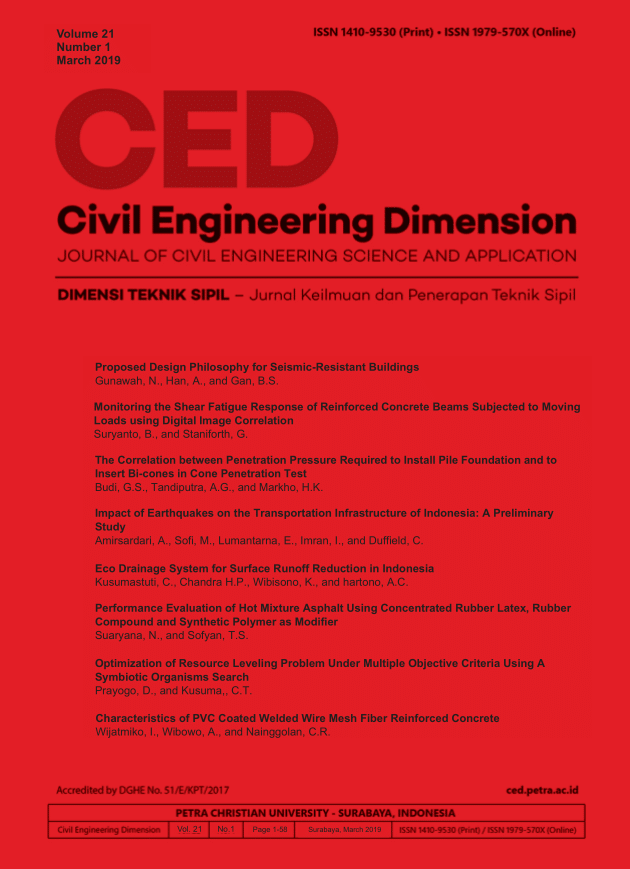Proposed Design Philosophy for Seismic-Resistant Buildings
DOI:
https://doi.org/10.9744/ced.21.1.1-5Keywords:
Earthquake magnitude, earthquake shaking, earthquake resistant-design, human casualties, seismic design, seismic intensityAbstract
Modern seismic design and technologies have undergone tremendous developments. In modern design codes, building structures subjected to high earthquake loads are allowed to experience plastic deformations without collapsing, and the design is permitted up to the ultimate strength. According to comparative results in Japan, the number of humans injured due to earthquakes is higher than the number of deaths/missing. Likewise, the number of residential buildings that collapsed are less than the partially damaged buildings. This outcome implies that residential buildings designed based on the revised seismic standards have good earthquake resistances. It also infers that the human deaths/injury casualties were not a result of the collapsed the structure, but due to the strong vibrations originated from the earthquake, yielding in the collapse of non-structural elements such as ceilings and bookshelves. This paper presents a proposed design philosophy that attempts to implement the effect of earthquakes to non-fatal human casualtiesReferences
Major Damage Earthquake Occurred in Japan, after 1996 (in Japanese), Japan Meteorology Agency. (http://www.data.jma.go.jp/svd/eqev/data/ higai/higai1996-new.html)
Seismic Intensity Level and Acceleration. Weather and Earthquakes, Seismic Intensity Information. 2003, Japan Meteorology Agency (http://www. jma.go.jp/en/quake/quake_sindo_index.html)
Wood, H.O. and Neumann, F., Modified Mercalli Intensity Scale of 1931, Seismological Society of America Bulletin, 21(4), 1931, pp. 277-283.
Grigoriu, M., 2016, Do Seismic Intensity Measures (IMs) Measure up?, Probabilistic Engineering Mechanics, 46, 80-93.
Verdugo, R, 2018, Seismic Site Classification, Soil Dynamics and Earthquake Engineering, In press, corrected proof, Available online November 2018.
Downloads
Published
How to Cite
Issue
Section
License
Authors who publish with this journal agree to the following terms:- Authors retain the copyright and publishing right, and grant the journal right of first publication with the work simultaneously licensed under a Creative Commons Attribution License that allows others to share the work with an acknowledgement of the work's authorship and initial publication in this journal.
- Authors are able to enter into separate, additional contractual arrangements for the non-exclusive distribution of the journal's published version of the work (e.g., post it to an institutional repository or publish it in a book), with an acknowledgement of its initial publication in this journal.
- Authors are permitted and encouraged to post their work online (e.g., in institutional repositories or on their website) followingthe publication of the article, as it can lead to productive exchanges, as well as earlier and greater citation of published work (See The Effect of Open Access).











